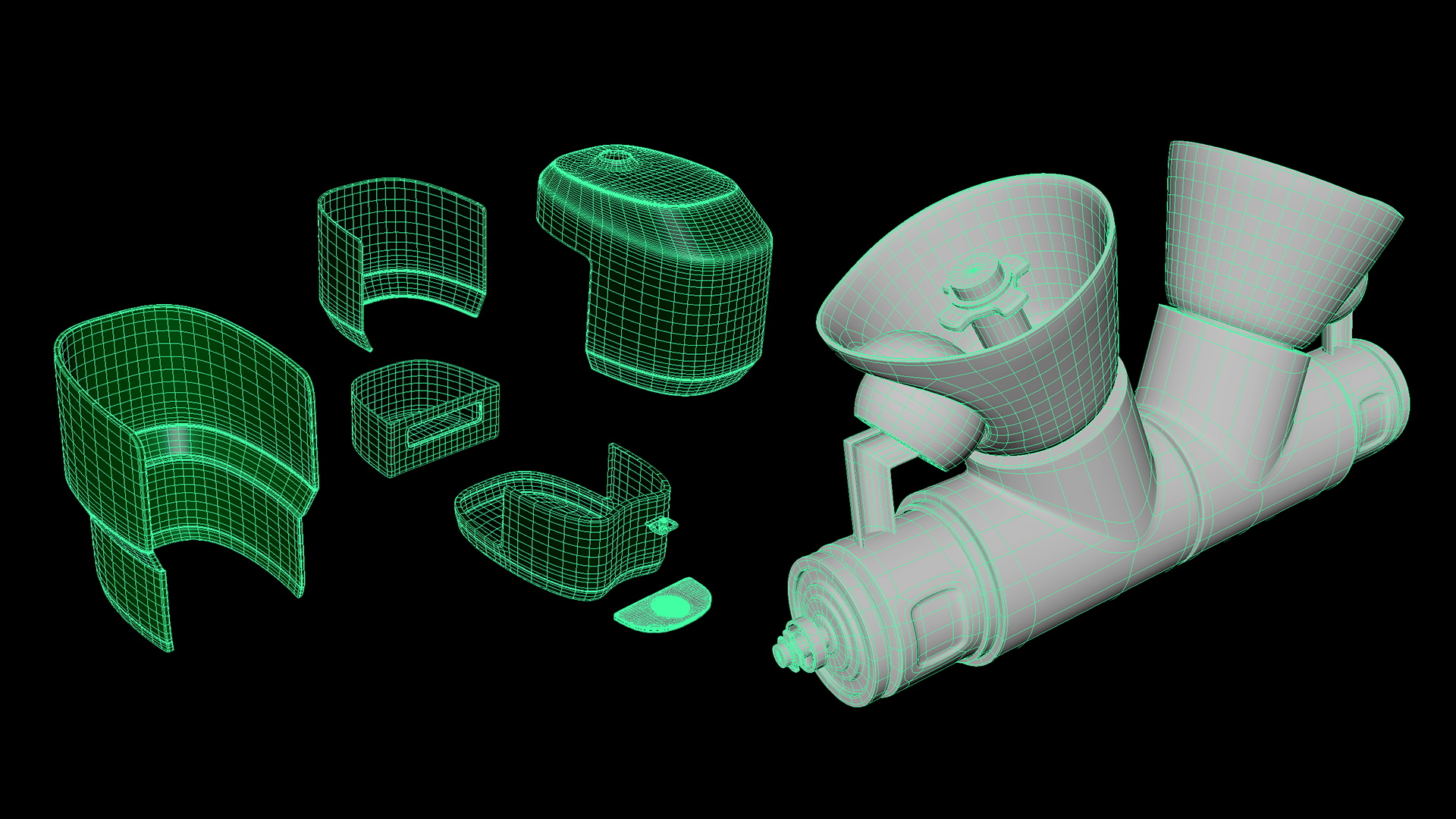Juicer Commercial
For the creative portion of my masters capstone project, I wanted to explore the full production pipeline for a product commercial. The main objective was to create an imaginary brand from the ground-up and make a 3D commercial of their product using different elements of Motion Design. The software I used: Adobe Photoshop, Illustrator, After-Effects, Autodesk Maya, Maxon Cinema 4D, Premier-pro. This final documentation can be found here.
Branding:
This step was critical to narrow down the design choices for brand identity. I chose Smart Juicer company ‘Zumex’ as my reference. I admired their approach for the commercial they created for Soul Series 2 model. By combining the words ‘Pure’ and ‘Extract’, I finalized the name on ‘PureXtract’, which reflects its functionality and has a modern tone. While designing the logo, I chose a font like ‘Aktiv Grotesk' font family by Dalton Mag for its modern and clean aesthetics.
It was a conscious decision to make the ‘X’ as an hourglass to symbolize a smooth flow of motion. Here is the final animation:
Product Modelling:
The main product was modeled in Autodesk Maya. Once done, I exported it to Cinema 4d for animation. I am not a product designer, so I heavily relied on the ‘Soul Series 2’s design. I followed their 3D renders and modeled every part from scratch. I used Live-Booleans to create the complex shapes and cleaned them up.

The filtration plates have some complex patterned holes. I created the patterns in Adobe Illustrator and exported them to Cinema 4D. For the integrated ‘AI’ sequence, I used ‘JS Displacement map generator’ to create a custom map, which replicated a circuit board.
Fluid Simulation:
This is my first time hands-on experience on fluid simulation. I learned Insidyum Xparticles and Nextlimit Realflow for this project. The priliminary testing sequences can be seen below:
I picked 3 sequences that came with their own unique challenges. The first sequence is where the flow of juice rotates around the product to reveal the logo. To achieve this the fluid had to follow a spline path. I had to tweak the amount of turbulence and axial force to achieve a nice flow.
On the second sequence, the orange was squeezed on the filtration system and juice came through the other side. I experimented with the collision settings and particle density. In addition to that, I wanted the fluid sim to have a ‘slow-motion’ effect at the end. I achieved that effect using ‘time-scaling’.
On the third sequence, the oranges are cut into two slices, get attached to continuously rotating mechanism, get squeezed and lastly drops on the waste basket. I had to parent constraint the slices to multiple objects and animate them to attach and detach from one to other. The fluid emitter needed to be connected to the slices so that when simulation happens, it needs to react to the rotation and gravitation pull. In addition, all the objects had to transform into colliders so that the fluid don’t go through those, and the simulation looks realistic.
Lighting & Compositing:
I used redshift to render each sequence. I rendered them in Multi-EXR using the AOV manager to have the flexibility in post-production. This is the first time I used ACES for richer color production. Once all the renders are exported to after-effects, I created 2D title plates for the feature sequences, animated the logo and outro to finalize the commercial.
This was a wonderful learning experience for me. I am thankful to my Committee Chair Professor Marty Fitzgerald; Committee Members Professor Jacy Richardson and Professor Chris Wilson for their guidance and support.